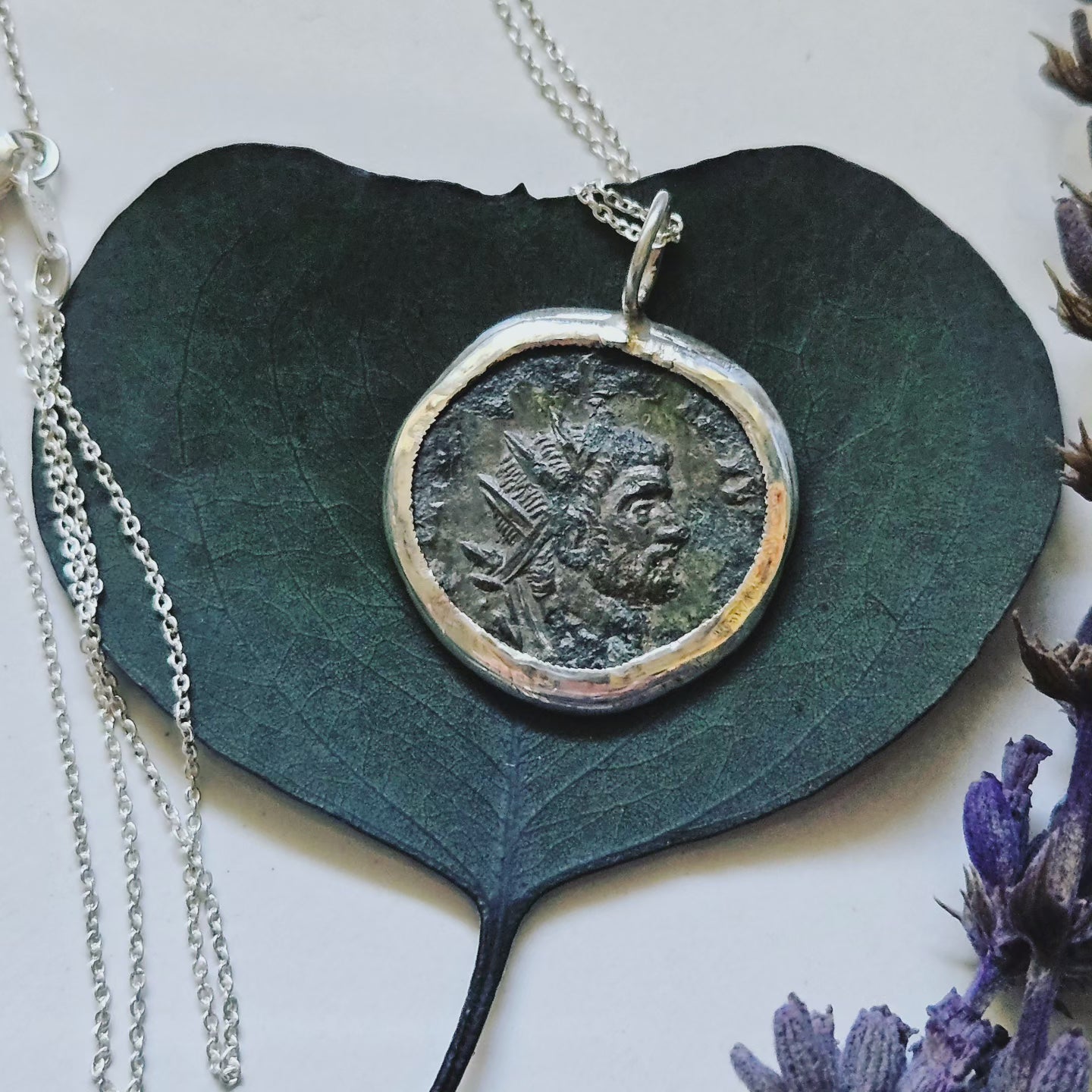Murdoch's Method
"When in Rome": Ancient Roman Coin Necklace (Claudius II Gothicus/Altar)
"When in Rome": Ancient Roman Coin Necklace (Claudius II Gothicus/Altar)
Couldn't load pickup availability
*Note: These coins are identified to the best of my ability using any letters/symbols that are visibly available, and searching against a numismatic database. Please note that while I try incredibly hard to correctly identify them, I am just a hobbyist -- not an expert. Each coin is hand cleaned by me in a process that takes months of soaking, toothpicking, and toothbrushing. Colorization is natural patina from old age that is valued by coin collectors, and I have protected it with Renaissance wax. Because these coins are around 2000 years old and spend hundreds of years buried in the ground, there will be imperfections in surface, patina, and shape. My coins mostly come from the Balkans, and are discovered in buried hoards by farmers tilling soil.
Materials in Bezel/Bail/Chain: Sterling Silver
Chain and Closure: 16", dainty, lobster claw closure with small jump ring
Specific Coin Identification: RIC V Claudius Gothicus 261
Obverse: "DIVO CLAVDIO"
Reverse: "CONSECRATIO"
Emperor in Power: Quintillus
Emperor Bust on Coin: Claudius II Gothicus
Deity/Image on Back: Lit altar
Mint Date: 270 CE. This coin is 1,753 years old.
Mint Location: Mediolanum
Denomination: Antoninianus (Silver)
Story time!:
Quintillus, who ascended the throne after his brother Claudius II Gothicus's death in 270 CE, ruled for, at most, six months! (Although, some say it was only for 17 days...)
Quintillus was very popular with the Senate -- in fact, it was they who proclaimed him emperor -- but due to strict military discipline, was unpopular with his soldiers. In fact, he may have ultimately been murdered by said military, although accounts of his manner of death differ wildly.
In his short reign, he was able to mint all but a few coins, this one honoring the death of his brother being one of them.
His brother, Claudius II Gothicus, ruled the Empire from 268-270 CE after a successful military career. But what is this short-term emperor famous for nowadays?
Well, have you ever celebrated St. Valentine's Day?
According to accounts dating from the Middle Ages, a Bishop Valentine refused to stop serving the persecuted Christians in Rome, and an emperor Claudius killed him for it. Since the first Claudius didn't persecute Christians, scholars presume this refers to Claudius II (even though he was hardly IN Rome, as he was mostly off fighting wars).
Other later accounts say this happened on February 14th, 269 CE, which would indeed be when Claudius II ruled.
But again, these accounts were all made in the Middle Ages, hundreds of years after said incident. Plus, there are multiple possible Saint Valentines, and it's possible that the Saint's Day didn't initially refer to THAT Valentine, or maybe even refers to a conglomerate of Valentines. Which, would make sense. Saint Valentine is the patron saint of courtly love, but also of beekeepers and epilepsy. Like, that's quite an odd assortment for one man!
In any case, if you are somebody who hates Valentine's Day, then THIS is the coin for you! (Or also somebody who loves it, because darkly, there wouldn't BE a Valentine's Day if Claudius hadn't, ya know..., Bishop Valentine...?) Cool, cool, cool.
Materials
Materials
Dimensions
Dimensions
Care information
Care information














